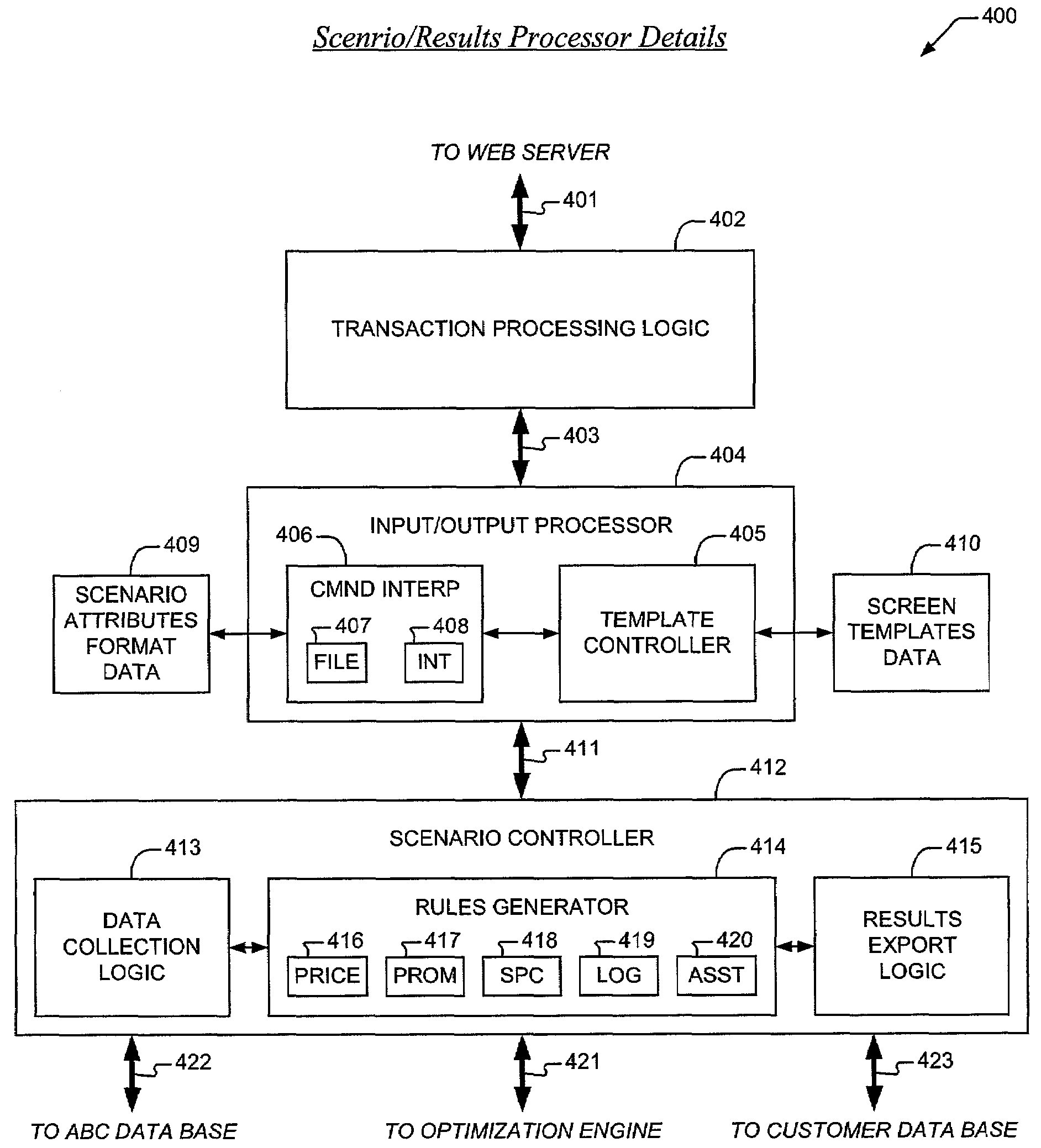Interface for merchandise price optimization
a technology of merchandise price and interface, applied in the field of economics, can solve the problems of reducing the margin of error, increasing sales, and related products, and reducing the sales of other products
- Summary
- Abstract
- Description
- Claims
- Application Information
AI Technical Summary
Benefits of technology
Problems solved by technology
Method used
Image
Examples
Embodiment Construction
[0057]In light of the above background on the techniques employed by present day techniques for optimizing the prices for a group of products within a store or group of stores, a detailed description of the present invention will be provided with reference to FIGS. 1 through 38. The present invention overcomes the limitations of present day demand / price models by providing an apparatus and methods that enable category managers to optimize the prices of multiple sets of highly related products within a product group. The optimization afforded by the present invention 1) employs product cost figures to determine an optimum set of prices, and 2) takes into consideration the effects in demand that prices changes in one set of highly related products will cause in all other sets of highly related products within the product group.
[0058]Now referring to FIG. 1, a chart 100 is presented illustrating how small price changes are applied according to the present invention in order to shift co...
PUM
 Login to View More
Login to View More Abstract
Description
Claims
Application Information
 Login to View More
Login to View More - R&D
- Intellectual Property
- Life Sciences
- Materials
- Tech Scout
- Unparalleled Data Quality
- Higher Quality Content
- 60% Fewer Hallucinations
Browse by: Latest US Patents, China's latest patents, Technical Efficacy Thesaurus, Application Domain, Technology Topic, Popular Technical Reports.
© 2025 PatSnap. All rights reserved.Legal|Privacy policy|Modern Slavery Act Transparency Statement|Sitemap|About US| Contact US: help@patsnap.com



